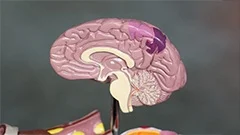Introduction
The nervous system is a complex, intricate network that governs virtually every physiological function within an organism. Among its myriad roles, one of the most crucial is the regulation of motor skills. This course aims to delve into the inner workings and complexity of this relationship between the nervous system and motor functions.
Definition of Motor Skills
Motor skills encompass a wide range of movements that animals perform, from simple reflexes to complex, learned behaviors. They can be classified as either reflexive, voluntary or skilled. Reflexive motor skills are automatic responses triggered by specific stimuli, while voluntary motor skills require conscious thought and intention. Skilled motor skills involve a high degree of coordination, precision, and repetition to achieve a particular goal.
Overview of the Nervous System
The nervous system consists of two main parts: the central nervous system (CNS) and the peripheral nervous system (PNS). The CNS includes the brain and spinal cord, while the PNS is made up of nerves that connect the CNS to the rest of the body. The nervous system uses electrical signals, known as nerve impulses, to communicate information between cells and organs throughout the organism.
Neurons: The Building Blocks of the Nervous System
At the heart of the nervous system are neurons, specialized cells that transmit electrical signals by generating action potentials. These action potentials travel along the neuron's axon to other neurons, muscles, or glands, allowing information processing and communication throughout the body. Neurons can be broadly classified into three types: sensory (afferent), motor (efferent), and interneurons, each playing a distinct role in the nervous system.
Reflexive Motor Skills
Reflexes are rapid, automatic responses to specific stimuli, and they involve both afferent and efferent neurons. The reflex arc is the pathway along which the impulse travels from the sensory neuron (afferent) through the interneuron and finally to the motor neuron (efferent). A well-known example of a reflex is the withdrawal reflex, in which touching a hot surface results in quickly pulling your hand away.
Voluntary Motor Skills
Unlike reflexes, voluntary motor skills require conscious effort and thought. These skills rely on the communication between the brain's cortex (the area responsible for higher cognitive functions) and the motor cortex, which controls movement through its connections with the spinal cord and the muscles themselves. Voluntary motor skills can be further subdivided into two types: simple and complex. Simple voluntary motor skills involve basic movements such as grasping an object or walking, while complex motor skills require greater coordination, precision, and learning, like playing a musical instrument or participating in a sport.
Skilled Motor Skills
Skilled motor skills are those that demand significant practice, repetition, and refinement to achieve mastery. These skills typically involve the integration of sensory, cognitive, and motor components. For example, throwing a ball requires coordinating visual input with movement planning, executing the throw, and adjusting based on feedback from the environment. Skilled motor skills are often learned through observation, imitation, and reinforcement, with significant contributions from both the cerebellum (responsible for fine motor control) and the basal ganglia (involved in learning and habit formation).
Plasticity of the Nervous System and Motor Skills
The nervous system exhibits a remarkable capacity for change and adaptation, known as neuroplasticity. This plasticity enables animals to learn new motor skills and adapt to changing environments. Neurons can form new connections (synapses), strengthen existing ones, or even rearrange their internal organization in response to experience. This process is essential for learning and memory consolidation, as well as in recovery from injury or disease.
Conclusion
Understanding the complex functions of the nervous system in motor skills provides insight into how animals navigate and interact with their environment. By exploring the intricacies of the nervous system, we can gain a deeper appreciation for the incredible abilities of living organisms and the potential for healing and improvement in the human condition.
MCQ: Test your knowledge!
Do you think you know everything about this course? Don't fall into the traps, train with MCQs! eBiologie has hundreds of questions to help you master this subject.
These courses might interest you
Create a free account to receive courses, MCQs, and advice to succeed in your studies!
eBiologie offers several eBooks containing MCQ series (5 booklets available free for each subscriber).




